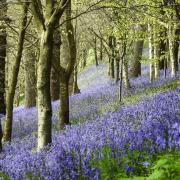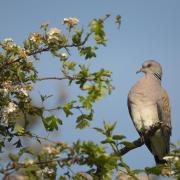In a scene that could have been scripted for a Hollywood blockbuster, a family was reunited just in time for Christmas.
However, this family are in fact a herd of free-roaming European bison who have been brought together as part of a ground-breaking wilding initiative that aims to help tackle the climate and nature crises.
The Wilder Blean Project, which was made possible through a grant from Players of People’s Postcode Lottery Dream Fund, has already gained global recognition and has even caught the attention of actor and environmentalist Leonardo Dicaprio, who praised the initiative on his social media channels.
In July of last year, the project reached its first epic milestone when three female bison took their first steps into the ancient Canterbury woodland under the gaze of the world’s media. These bison were the founding members of the Wilder Blean Project herd, made up of a matriarch from Scotland and two younger females from Ireland.
While the team continued to cross the hurdles placed in front of them by legislation and other animal import issues surrounding the bull, an unexpected but welcomed development awaited Wilder Blean staff: Bison Rangers Tom Gibbs and Donovan Wright discovered that one of the females from Ireland had given birth to a beautiful calf. This was a surprise because bison conceal their pregnancies as a protection mechanism against predators. This historic moment - of the UK’s first free-roaming bison calf to be born in thousands of years - marked yet another breakthrough for this pioneering project.
As time went on, it seemed unlikely the herd would be complete in 2022, however the tenacious efforts of the team were rewarded when a breakthrough moment finally resulted in the paperwork being given the thumbs up and the bull was transported into the Blean just in time for Christmas on December 23.
Now a fully formed herd, the bison will be left to roam the woodland and take on their role as eco-system engineers, where they will help to re-shape the landscape, encouraging new wildlife to grow through their natural behaviors. By de-barking trees, dust-bathing and creating corridors through the dense woodland they bring light to the forest floor, making space for wildlife to thrive.



























